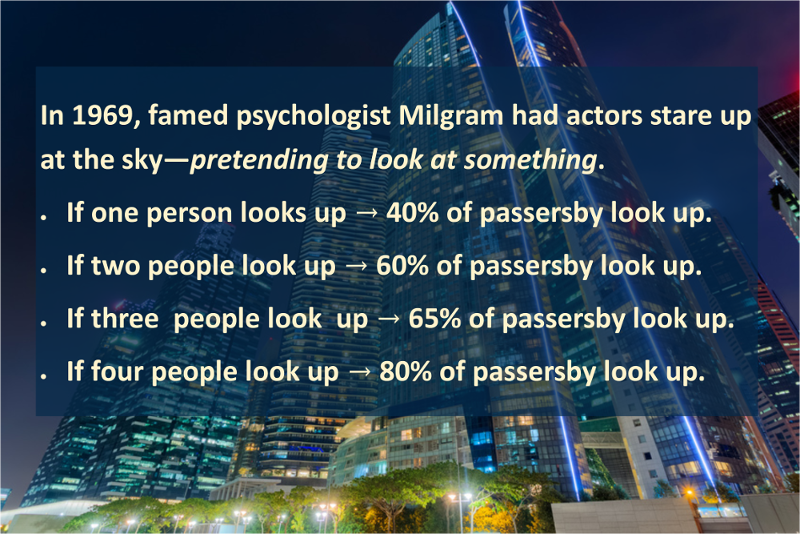JoomConnect Blog
The Elements of Effective Case Studies
It’s common knowledge that before you buy a car, you should take it for a test drive. It’s the only way to know if the car is going to meet your expectations. If you think about it, we actually apply the ‘try it before you buy it’ strategy to a lot of decisions, including those made for business. Since your target audience can’t really ‘test drive’ a new infrastructure or a remote monitoring session, offering them a case study that shows how your current clients benefit from working with your MSP is the next best thing.
Case studies are an examination of a positive interaction with a client, detailing it in a written narrative from start to finish. Keep in mind, however, that a positive client experience doesn’t necessarily make a great case study. Imagine if you had a client call the help desk because they couldn’t get their computer to connect to the Internet. Your tech asks them to check a few things, and it turns out that the issue was that the client’s laptop was in ‘Airplane’ mode. Your client and your tech share a laugh and end the conversation. Yes, the client is thrilled with your services - but, the interaction is not necessarily a riveting case study.
Using social proof to influence behavior is by no means a new concept. The psychological tactic of using the experiences of one person to manipulate that actions of others has been around since the days of angry villagers with pitchforks and torches. Over the last century, economists have been trying to figure out how to harness this mob-mentality in order to influence commerce.

In 1969, a psychological study made a very simple observation: People follow the actions of other people. Think: Peer pressure, minus the after-school-special feeling.
Choosing The Right Scenario to Study
Let's take a look at a few things that you should be considering when deciding on the right client interactions to build an effective case study that will resonate with your target audience:
- Multi-Faceted: When considering the ideal case study subject, you’ll want to find a scenario where you helped the client on multiple levels. We recommend at least three major components to the project you’re going to examine. An example of a few strong tasks that would help a prospective client understand a spectrum of your abilities would be:
- Installation of thin clients for workstations.
- Implementation of Microsoft Office 365.
- Employee education on using 365 for their daily operations.
- Recent: Remember how you helped that insurance company upgrade to Windows XP on desktops with a Pentium 4? Or what about the time that you assisted a few very embarrassed clients from the Anna Kournikova virus? While these are great stories for you to have, and even break out occasionally in conversation, they are not the right kind of material for a strong case study. Nevermind the good ol’ days. Focus your case studies on recent projects and accomplishments.
- Good Standing: As with every relationship, there are ups and downs in a B2B partnership. Not every business relationship is going to end well. It’s a fact of life. When picking a case study, it’s preferred that you are still in good standing with the company in question. You’d be surprised how many times a client will say “Well, they were great at first but then….” which makes for an awkward situation and wasted time and resources. This is why you should always ask a client before using their project as your case study.
- Curve Ball: You are probably well-aware that, when it comes to business technology, you should expect the unexpected. In terms of demonstrating your abilities and knowledge, the unplanned challenges encountered, as well as resolved, in the midst of a project help distinguish your organization and make great additions to case studies.
Elements of a Case Study
There are a few basic elements that must be included in any case study in order to maximize its impact as social proof. It’s at your discretion how you want to format and present them.
The Challenge
To start the case study, you need to clearly explain why your clients were in need of your business’ technology services. Whether you use a story-like narrative or a list of bullet points to describe the challenges, the reader’s ultimate opinion of your MSP’s knowledge and abilities are going to be evaluated based on how well you were able to find and implement the resolution to these challenges. In the end, you want to use information and language that allows your reader to identify with the client and situation highlighted by your study. Engaging your audience will nudge them closer toward a sales conversion.
Proposed Solution
If you think about it, how you and your team develop and approach a project says quite a bit about your company. Proper planning, decisive actions, experienced resources, organized management and administration, and completion on time and under budget are a great foundation to have in any business relationship. Showing your readers that you are capable of delivering those important qualities when the chips are down can be very persuasive.
Be careful not to be overly technical when detailing your resolution strategy. Your target is less concerned with model numbers and CPUs and more concerned with capabilities and features of the solutions.
Results
You’ve stated the challenge and detailed the solution you’ve developed. Now, it’s time to illustrate how your service delivered on its promises and how the client’s business operations were improved as a result. This section should have a few detailed, specific points that demonstrate how your team and the technology solution you’ve just completed implementing meets, and hopefully exceeds, the needs and expectations of the client. A few direct quotations from your client is a must. You might want to have a comment from your project leader, as well. This should be a summary of the whole experience, keeping in mind that you want your reader to imagine that it's their business with all these awesome new resources and tools.
Unlike other elements of marketing, it’s okay for a case study to be a bit of a narrative. Part of what makes case studies so powerful is that it’s a story about technology that your target audience can relate to. Ready to get started? Contact us today if you need help writing your case studies!




Comments